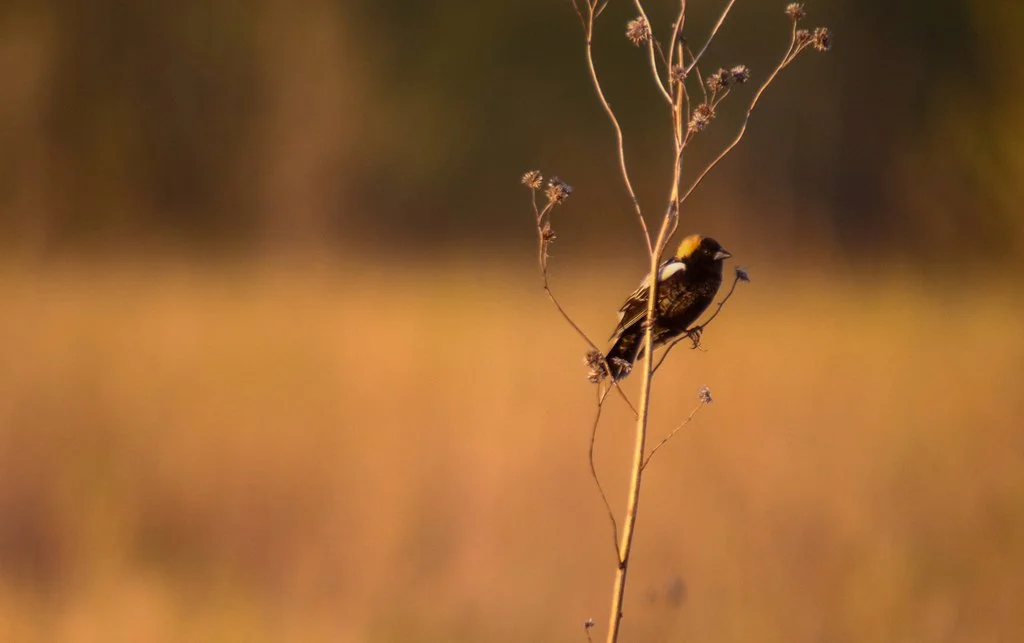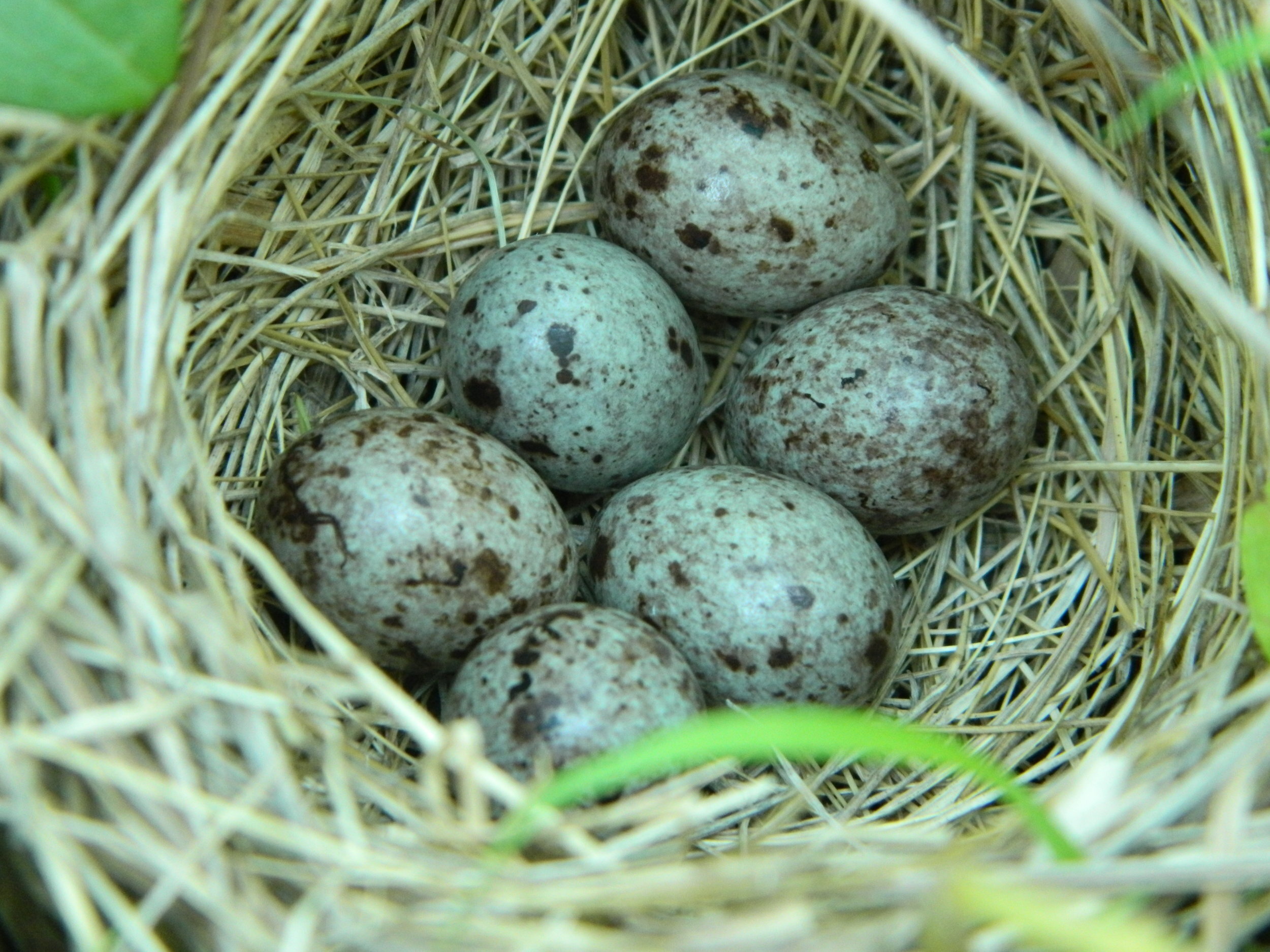Each spring, the prairies of Faville Grove Sanctuary come alive with one of nature’s most unique bird calls—the bubbling, metallic song of the Bobolink (Dolichonyx oryzivorus). These medium-sized, long-distance migrants fill the air with their unmistakable melody, often delivered mid-flight in a fluttering, helicopter-like hover above their territory. One early interpretation of his song gave rise to his common name: “Bob o’ Lincoln,” eventually shortened to “bobolink.”
Plumage of a male Bobolink after breeding season (photo by Jeff Steele/SoWBA).
In his breeding plumage, the male Bobolink is unlike any other North American songbird. With black underparts, a gleaming white back and shoulders, and a golden-yellow nape, he’s earned the nickname “skunk blackbird.” But this striking appearance doesn’t last long. In a rare trait for songbirds, Bobolinks undergo two molts per year—one after breeding and another on their wintering grounds. After the breeding season, the male sheds his black-and-white tuxedo for a more modest plumage nearly identical to that of the female: warm yellow-buff tones with dark streaking. The transformation is so complete that even experienced birders can be fooled by their subdued, off-season look.
Faville Grove is an ideal refuge for Bobolinks. As grassland specialists, they were once widespread across the North American tallgrass prairie—a landscape that has largely vanished. Bobolinks now depend on carefully restored native habitat or agricultural lands (like hayfields and pastures) that are specifically managed to avoid cutting or mowing during the nesting season (see Wisconsin DNR's resource on the avoidance period for nesting birds).
Male Bobolinks arrive in early spring, claiming territories through song and dramatic display flights. With wings fluttering and tails spread, they hover above the grass, calling enthusiastically. Once mated, the female builds a well-hidden, cup-shaped nest on the ground, weaving it at the base of thick vegetation. She lays five to seven eggs and incubates them alone—but once hatched, both parents feed the young. Sometimes, the parents are even aided by a “helper,” a juvenile from the previous year or another adult whose own nest failed.
Bobolink nest with six eggs (photo by Carolyn Byers).
After about two weeks, the chicks fledge but remain hidden in the grass until they can fly. Only one brood is raised per year, making breeding success heavily dependent on timing. If hayfields are cut too early, nests and chicks are destroyed. That’s why land management for grassland birds is vital for Bobolinks’ long term survival.
By late summer, Bobolinks gather in flocks and move to freshwater marshes and agricultural fields to molt and fatten up before migration. Then begins one of the longest migrations of any North American songbird—a round-trip journey of roughly 12,500 miles to the grasslands of Argentina, Paraguay, and Bolivia. During migration and on their wintering grounds, Bobolinks switch diets almost entirely, becoming granivorous, feasting on rice, oats, sorghum, and wild seeds. Their appetite hasn’t made them popular with farmers—leading to the birds being seen as pests and often poisoned or shot. This is how they earned the nickname “ricebirds.” Historically in Jamaica, plump, migrating Bobolinks were captured and eaten, giving them yet another nickname: “butterbirds.”
Since 1970, Bobolinks have lost over 50% of their population, part of a broader crisis facing North America’s grassland birds. A 2019 study published in Science, “Decline of the North American Avifauna,” estimated a loss of more than 720 million grassland birds over the last 50 years. Habitat loss, intensified agriculture, pesticide use, and climate change all contribute.
Now is the best time to experience Bobolinks in all their glory. Visit Faville Grove this month and walk the prairie trails in the early morning—especially along Prairie Lane. Listen for their rollicking, burbling song and watch for the slow, fluttering flight of a male proclaiming his territory.
Written by Jeff Steele, Faville Grove Sanctuary land steward
Cover photo by Jeff Steele/SoWBA. A male Bobolink with black, white, and yellow breeding plumage, perched on a tall prairie plant.







